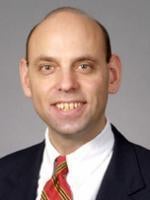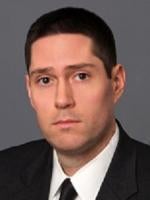Introduction
The U.S. Court of Appeals for the District of Columbia Circuit has rendered its decision examining key elements of the 2015 Federal Communications Commission (“FCC”) order regarding the Telephone Consumer Protection Act (“TCPA”). [1] A unanimous panel of the Court ruled that the FCC exceeded its authority under the TCPA in interpreting the statutorily-defined term “Automated Telephone Dialing System” (“ATDS”) and in crafting a one-call “safe harbor” with respect to reassigned telephone numbers. Specifically, the D.C. Circuit held that the FCC’s definition of ATDS was “unreasonably, and impermissibly, expansive.” The Court also held that while the FCC did not exceed its authority in defining “called party” under the TCPA to mean the current subscriber of a telephone number, the one-time exemption from liability for a call to a reassigned number for which the caller had previously obtained consent was arbitrary and capricious, and incompatible with the FCC’s called-party definition. The D.C. Circuit declined to issue its own interpretation of what constitutes ATDS and what rules should apply to calls to reassigned numbers. The Court did provide some guidance, however, on these subjects for future rulemaking by the FCC.
At the same time, the Court upheld the FCC’s (1) ruling requiring callers (that is, the entities placing the calls alleged to violate the TCPA) to honor all “reasonable” attempts by telephone subscribers to revoke previously-provided consent, and (2) exemption of certain healthcare-related calls from the provisions of the TCPA.
Background — the TCPA and the FCC’s 2015 Order
In relevant part, the TCPA, 47 U.S.C. § 227, [2] regulates the use of pre-recorded voice messages and ATDS equipment to make calls under certain circumstances. [3] The term ATDS is defined by the TCPA as any equipment having the capacity “to store or produce telephone numbers to be called, using a random or sequential number generator” and “to dial such numbers.” [4]
Most notably for the purposes of the FCC’s 2015 Order, the statute prohibits the making of calls to cellular telephones using pre-recorded messages or ATDS without prior consent. [5] The TCPA exempts from liability any informational call that is “made with the prior express consent of the called party” and any telemarketing call that is made with “prior express written consent.” [6] At least two federal courts of appeals had previously held that TCPA consent must come from the “called party,” or someone acting on that person’s authority, and that the “called party” is the “current subscriber” to the wireless number called. [7]
The TCPA provides a private right of action under which a plaintiff may recover the greater of actual monetary loss or $500 per violation. [8] A court may treble the amount of damages upon a finding of a “willful or knowing” violation. [9] The TCPA places no cap on damages for claims brought individually or as a class action. [10]
In July 2015, the FCC issued an order that sought to clarify numerous aspects of the TCPA. Among other things, the FCC ruled that “dialing equipment generally has the capacity to store or produce, and dial random or sequential numbers (and thus meets the TCPA’s definition of ‘autodialer’) even if it is not presently used for that purpose, including when the caller is calling a set list of consumers.” [11] The FCC “agree[d] with commenters who argue that the TCPA’s use of ‘capacity’ does not exempt equipment that lacks the ‘present ability’ to dial randomly or sequentially,” [12] and suggested that “the capacity of an autodialer is not limited to its current configuration but also includes its potential functionalities.” [13] Thus, under the 2015 Order, equipment that does not have the present capability of functioning as an ATDS may nonetheless be found to constitute an ATDS based on the view that the equipment could, in theory, be modified to have such functionality. In reaching this result, the majority of FCC Commissioners failed to identify any modern telephone equipment that would not constitute an ATDS, other than a rotary-dial phone. [14]
Additionally, the FCC took the position that the statutory term “called party” means “the subscriber, i.e., the consumer assigned the telephone number dialed and billed for the call, or the non-subscriber customary user of a telephone number included in a family or business calling plan.” [15] Accordingly, for a caller to mount a consent defense to a TCPA claim, the FCC ruled that the caller must have actual consent from the current subscriber or “customary user” of the number. In cases of reassigned numbers, the caller’s subjective intent to place a call to the former subscriber of the number from whom the caller obtained consent was irrelevant. The 2015 Order instead provided that a caller may avoid liability only “for the first call to a wireless number following reassignment.” [16] In the FCC’s view, “the one-call window provides a reasonable opportunity for the caller to learn of the reassignment,” [17] and the FCC noted the existence of commercially available services that may provide notice of reassignment of wireless numbers. [18] The 2015 Order acknowledged that one call may not be sufficient to provide actual knowledge of reassignment of a wireless number, but stated that even in instances in which there is no actual notice, the caller should “bear[] the risk in situations where robocalls are placed to reassigned wireless numbers and the called party has not given his or her prior express consent.” [19]
The 2015 Order granted a limited exemption from the TCPA of certain types of “pro-consumer messages about time-sensitive financial and healthcare issues.” [20] With respect to consumer financial matters, the order exempted calls and text messages concerning prevention of fraudulent transactions or identity theft, data security breaches, and money transfers, subject to several conditions including that the calls or text messages: (1) are only placed to the number provided by the consumer to the financial institution; (2) state the name and contact information of the financial institution making the call; (3) are limited to the specific, urgent purpose and do not contain telemarketing or debt collection information; (4) are limited to less than one minute or 160 characters or less; (5) are limited to no more than three messages “per event over a three-day period for an affected account;” and (6) contain appropriate opt-out options for the called party. Also, a financial institution must honor any opt-out request immediately. [21]
Because the TCPA itself does not define the term “prior express consent” and contains no provision addressing whether “prior express consent” can be revoked, there had been some confusion over whether consent, once given, can be revoked. While some courts had expressed the view that once provided, consent under the TCPA cannot be revoked, those cases were in the minority, and the trend has been to construe the TCPA as permitting revocation of consent, despite the absence of any express statutory provision. [22] The 2015 Order clarified that a called party may revoke consent at any time and through any “reasonable means,” and that “[a] caller may not limit the manner in which revocation may occur.” [23]
The order further explained that “consumers may revoke consent in any manner that clearly expresses a desire not to receive further messages.” [24] Thus, the order adopted the position that “[c]onsumers generally may revoke, for example, by way of a consumer-initiated call . . . or at an in-store bill payment location, among other possibilities.” [25] The FCC — without reference to any fact finding — appeared to have determined that “in these situations, callers typically will not find it overly burdensome to implement mechanisms to record and effectuate a consumer’s request to revoke his or her consent.” [26] The order also rejected one petitioner’s request for clarification that a caller be permitted to “designate the exclusive means by which consumers must revoke consent” as is permitted in the context of several other consumer statutes. [27] The 2015 Order — again without any reference to fact finding — stated that “[s]uch a requirement would place a significant burden on the called party who no longer wishes to receive such calls.” [28]
Two of the five FCC Commissioners sharply dissented from the majority’s conclusions, including (then-Commissioner and now-Chairman of the FCC) Ajit Pai. In their dissents, they pointed out that the 2015 Order would unnecessarily restrict a business’s legitimate communications with its customers, and would encourage abuse of the TCPA by plaintiffs’ lawyers seeking to capitalize on the statute’s generous (and some would say outdated) damages provisions. [29]
Nine different petitioners filed suit in the D.C. Circuit seeking to have the 2015 Order vacated. [30] Following briefing, argument was held on October 19, 2016, before a panel comprised of the Honorable Srikanth Srinivasan, Harry T. Edwards, and Cornelia Pillard. [31]
The D.C. Circuit’s Opinion
In its unanimous 51-page ruling, the Court first set aside the FCC’s expansive interpretation of the types of calling equipment that fall within the TCPA’s definition of ATDS. The Court observed that the FCC’s interpretation would subject “ordinary calls from any conventional smartphone to the Act’s coverage,” which it described as “an unreasonably expansive interpretation.” [32] In particular, the Court rejected the FCC’s interpretation of ATDS that included all devices with the mere “capacity” to function as an ATDS, even where the device was not able to function as an ATDS at the time of use. The Court illustrated the over-expansive reach of such an interpretation with an example of a person sending an invitation to a social gathering to ten friends by text message from a smartphone. If the FCC’s interpretation were correct, the Court noted, because of the ability to download and install various apps to the smartphone, the individual would violate the TCPA ten distinct times and risk liability of at least $5,000. [33] The Court found these “sorts of anomalous outcomes . . . an unreasonable, and impermissible, interpretation of the statute’s reach.” [34]
Further, the Court identified what it saw as “inadequacies” in the 2015 Order’s explanation of the functions which would render a device an ATDS. [35] Specifically, the Court interpreted the 2015 Order as ratifying and readopting the FCC’s prior rulings that defined “us[e of] a random or sequential number generator,” but also ratifying and readopting other prior rulings holding that predictive dialers (which call from a preselected list) can be considered autodialers ever where they lack the ability to call random or sequential numbers. The Court noted that these conflicting definitions of ATDS “‘offer[] no meaningful guidance’ to affected parties in material respects on whether their equipment is subject to the statute’s autodialer restrictions.” [36] The Court found other ambiguities in the FCC’s rules regarding the required functions of an ATDS — namely, the FCC’s inconsistent pronouncements that a dialer’s “basic function” must be able to “dial numbers without human intervention,” but, at the same time, that a “device might still qualify as an autodialer even if it cannot dial numbers without human intervention.” [37]
Although noting that the challenge was not presently before it, the D.C. Circuit also expressed reservations about the FCC’s interpretation of the statutory phrase “make any call using” an ATDS as including calls made using a system with autodialer functionality but actually not made using that functionality. The 2015 Order “endorsed a broad understanding under which the statute prohibits any calls made from a device with the capacity to function as an autodialer, regardless of whether autodialer features are used to make a call.” [38] The D.C. Circuit recognized, however, that one of the dissenting FCC Commissioners noted that the statute can be read as meaning “‘that the equipment must, in fact, be used as an autodialer to make the calls’ before a TCPA violation can be found.” [39] “Under the dissent’s understanding,” the Court reasoned, “everyday calls made with a smartphone” — or perhaps other technology that has non-autodialer capabilities — “would not infringe the statute.” [40] Although it refrained from delving into the issue because no petitioner had raised it, the Court suggested that the agency revisit the issue in future rulemaking. [41]
The Court also vacated the FCC’s one-call “safe harbor” for autodialed or pre-recorded voice calls made to “reassigned” wireless numbers — that is, wireless numbers that had previously been assigned to a person who had given the requisite consent but had since been reassigned to another, nonconsenting person. [42] The Court noted that the issue stemmed from ambiguity in the term “called party” in the context of a reassigned number: does “called party” refer to the person the caller expected to reach (whose consent had previously been obtained), or does it refer to the person actually reached, the wireless number’s present-day subscriber after reassignment (whose consent has not been obtained)? [43] In its 2015 Order, the FCC chose the latter interpretation, and the Court found that this interpretation was not arbitrary and capricious.
Yet, the Court concluded that the FCC’s one-call safe harbor rule was arbitrary and capricious. [44] The Court observed that the FCC’s justification for this safe harbor was to accommodate a calling party’s “reasonable reliance” on previously-obtained consent. [45] The Court then noted that exempting the first call, and only the first call, to a reassigned number was not itself reasonable because it did not take into account whether the calling party had notice of the reassignment before the call, whether the first call gave the caller reason to believe that the number had been reassigned, or how long after reassignment the first call was made. [46] Because the Court concluded that the one-call safe harbor could not be severed from the FCC’s interpretation of “called party,” the Court vacated both of those provisions of the 2015 Order.
The Court did uphold the FCC’s approach to revocation of consent allowing a party to revoke consent through any “reasonable means clearly expressing a desire to receive no further messages from the caller.” [47] The Court found that petitioners’ concerns, namely that without standardized procedures for revocation of consent a caller could ward off TCPA liability only by “tak[ing] exorbitant precautions” to be “overstated” and unpersuasive. [48] The Court advised callers to adopt “clearly-defined and easy-to-use opt-out methods” to avoid liability, and noted that “idiosyncratic or imaginative revocation requests might well be seen as unreasonable,” and thus insufficient. [49] Nor was the Court persuaded by petitioners’ argument that the 2015 Order precluded callers and consumers from contractually agreeing to revocation mechanisms, finding that the 2015 Order in fact did not speak to the parties’ ability to mutually adopt revocation rules. [50]
Finally, the Court addressed the challenge of a single petitioner regarding the scope of the FCC’s exemption for select healthcare-related calls on the grounds that it conflicted with the Health Insurance Portability and Accountability Act (“HIPAA”). [51] The Court rejected petitioner’s arguments, finding that petitioner misconstrued both statutes. [52] Further, the Court rejected petitioner’s argument that it was “inherently contradictory” to ease restrictions on certain kinds of calls to landlines but not to cellular phones. [53]
Potential Future FCC Action
Ajit Pai’s current position as Chairman of the FCC may bode well for future rulemaking addressing those portions of the 2015 Order set aside by the ACA International decision. Prior to his appointment as Chairman, then-FCC Commissioner Pai authored a dissent to the 2015 Order. In his dissent, he voiced strong criticism of the order as well as the TCPA, arguing that the TCPA has “strayed far from its original purpose” and advocating that the FCC “shut[] down the abusive lawsuits by closing the legal loopholes that trial lawyers have exploited to target legitimate business communications between businesses and consumers.” [54] As Chairman, he may well guide the FCC’s TCPA policies away from the type of expansive interpretation evidenced in the 2015 Order and toward protecting legitimate business communications with consumers. [55]
Conclusion
The D.C. Circuit’s rejection of the ATDS and reassigned-number provisions of the 2015 Order are a starting point for businesses to obtain greater clarity of these terms. But that clarity may take time to emerge. For instance, the 2015 Order’s definition of ATDS is one in a number of FCC pronouncements taking an expansive interpretation of that term, including predictive dialers that call a predetermined but non-random and non-sequential list of numbers. The FCC could issue a further order regarding, or businesses could petition for further clarification of, the term.
Similarly, it may take some time for clarity to emerge with respect to reassigned numbers. As noted above, two federal courts of appeals had ruled prior to the 2015 Order that “called party” means the current subscriber of the telephone number, and that reassignment effectively extinguishes any prior consent to call the number. Those courts may revisit their prior rulings on the subject in light of the D.C. Circuit’s ruling.
And, it remains to be seen whether the FCC, or one or more of the petitioners, requests en banc review by the full Court of Appeals for the D.C. Circuit, or petitions the Supreme Court for a writ of certiorari. Further litigation through those channels would also likely delay any finality or clarity on the FCC’s interpretations.
[1] ACA Int’l v. Fed. Comm. Comm’n, Case No. 15-1211 (D.C. Cir.) (hereinafter “ACA International” or the “Opinion”).
[2] See Pub. L. No. 102-243, 105 Stat. 2394 (codified as amended at 47 U.S.C. § 227). In 2005, Congress passed the Junk Fax Prevention Act, which amended the 1991 Act. See Pub. L. No. 109-21, 119 Stat. 359 (codified at 47 U.S.C. § 227) to regulate the use of fax machines, pre-recorded voice messages, and automatic dialing systems to send an “unsolicited advertisement,” see 47 U.S.C. §§ 227(a)(5), (b)(1)(C).
[3] 47 U.S.C. § 227(b).
[4] See id. at § 227(a)(1)(A); Satterfield v. Simon & Schuster, Inc., 569 F.3d 946, 951 (9th Cir. 2009); see also In re Rules & Regulations, Report and Order, 18 FCC Rcd. 14014, 14092 (rel. July 3, 2003) (the basic functions of an ATDS are to “dial numbers without human intervention” and to “dial thousands of numbers in a short period of time”).
[5] 47 U.S.C. § 227(b)(1)(A)(iii).
[6] Id. at § 227(b)(1)(A).
[7] See Soppet v. Enhanced Recovery Co. LLC, 679 F.3d 637, 643 (7th Cir. 2012); Osorio v. State Farm Bank FSB, 746 F.3d 1242, 1251 (11th Cir. 2014).
[8] 47 U.S.C. § 227(b)(3).
[9] Id.
[10] See id.
[11] See In re Rules and Regulations Implementing the Telephone Consumer Protection Act of 1991, Declaratory Ruling and Order, 30 FCC Rcd 7961, 7971-72 (rel. Jul. 10, 2015) (the “2015 Order”).
[12] Id. at 7974.
[13] Id.
[14] Id. at 7975.
[15] Id. at 8000-01.
[16] Id. at 8007.
[17] Id. at 8009.
[18] Id. at 8006 & n.298.
[19] Id. at 8009, n.312.
[20] Id. at 8023.
[21] Id. at 8027-28.
[22] See, e.g., Gager v. Dell Fin. Servs., 727 F.3d 265, 274 (3d Cir. 2013).
[23] 2015 Order, at 7989.
[24] Id. at 7996.
[25] Id.
[26] Id.
[27] Id.
[28] Id. at 7997.
[29] Id. at 8072, 8084.
[30] Congress has vested the FCC with the authority to promulgate rules and regulations implementing the TCPA, see 47 U.S.C. § 227(b)(2), and under the Hobbs Act, such orders may only be reviewed by the federal courts of appeal. 28 U.S.C. § 2342(1); Columbia Broad. Sys. v. U.S., 316 U.S. 407 (1942); CE Design, Ltd. v. Prism Bus. Media, Inc., 606 F.3d 443, 450 (7th Cir. 2010); Leyse v. Clear Channel Broad., Inc., 545 Fed. App’x. 444, 455 (6th Cir. 2013) (“there is little question that Congress intended FCC rules of this type at issue here to have force of law.”). The D.C. Circuit has the authority to rule on challenges to rules and regulations promulgated under the TCPA, including the 2015 Order. See 5 U.S.C. § 706.
[31] Further discussion on the oral argument for this case can be found at K&L Gates LLP’s TCPA Watch Blog. See D.C. Circuit Keeps the Conversation Going in ACA Challenge to FCC’s 2015 Order, K&L Gates TCPA Watch (Oct. 21, 2016), available at https://www.natlawreview.com/article/dc-circuit-keeps-conversation-going-aca-challenge-to-fcc-s-2015-order (last visited Mar. 16, 2018).
[32] Opinion, slip op. at 5.
[33] Id., slip op. at 16.
[34] Id., slip op. at 16-17.
[35] Id., slip op. at 23.
[36] Id., slip op. at 24-25 (citation omitted).
[37] Id., slip op. at 28.
[38] Id., slip op. at 30.
[39] Id. (emphasis in original).
[40] Id., slip op. at 31.
[41] Id.
[42] Id., slip op. at 5.
[43] Id., slip op. at 32.
[44] Id., slip op. at 35.
[45] Id., slip op. at 33-34.
[46] Id., slip op. at 35-36.
[47] Id., slip op. at 5.
[48] Id., slip op. at 41.
[49] Id., slip op. at 42.
[50] Id., slip op. at 43.
[51] Id., slip op. at 44.
[52] Id., slip op. at 49, 51.
[53] Id., slip op. at 50.
[54] 2015 Order at 8073.
[55] Ajit Pai to be Named New FCC Chairman, K&L Gates TCPA Watch (Jan. 23, 2017), available at https://www.natlawreview.com/article/ajit-pai-to-be-named-new-fcc-chairman (last visited Mar. 16, 2018).







 />i
/>i
